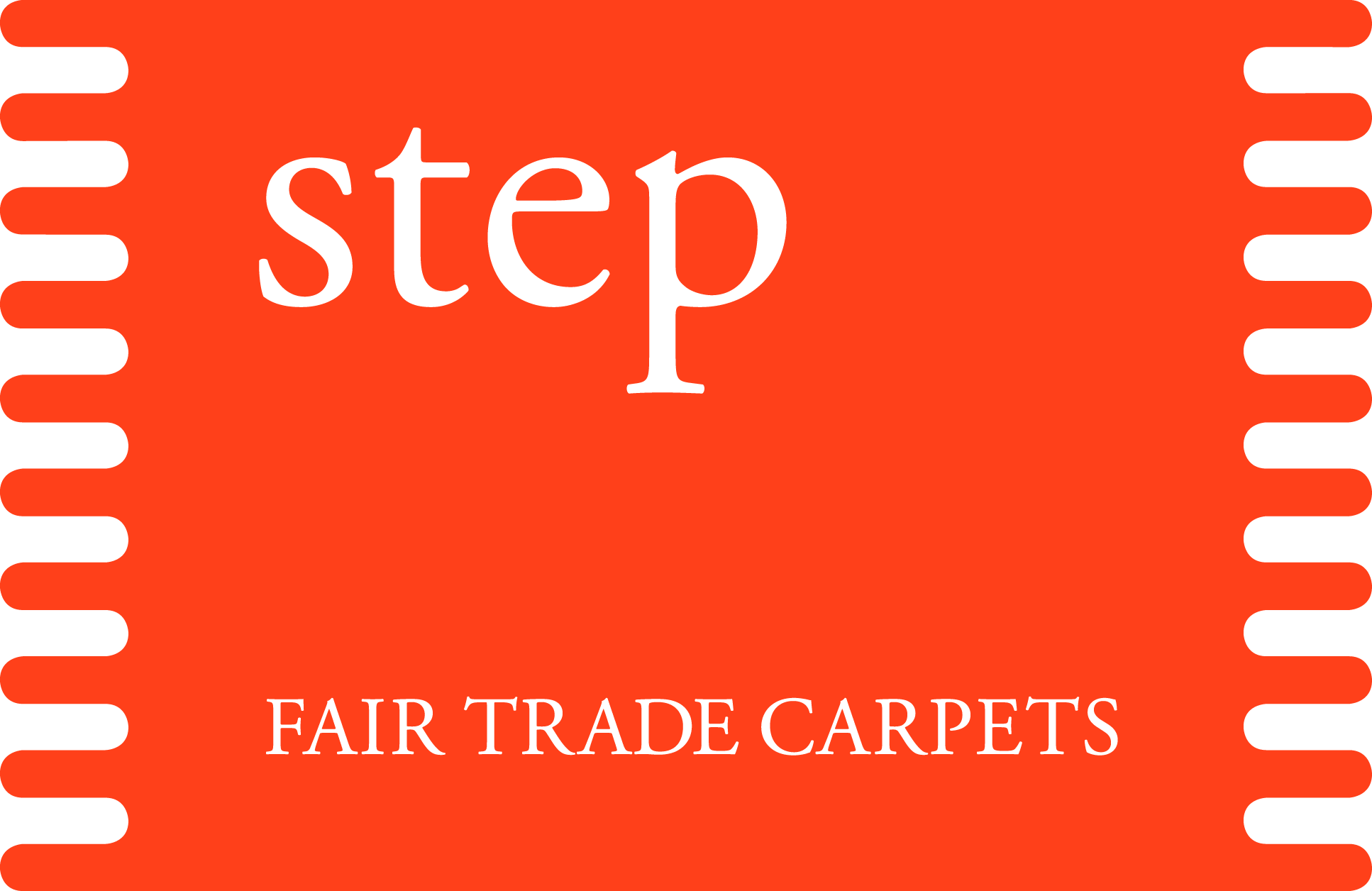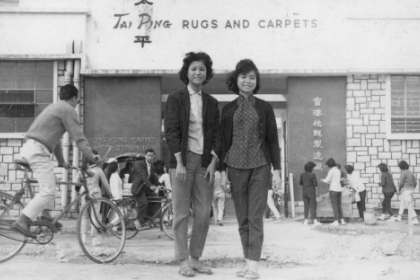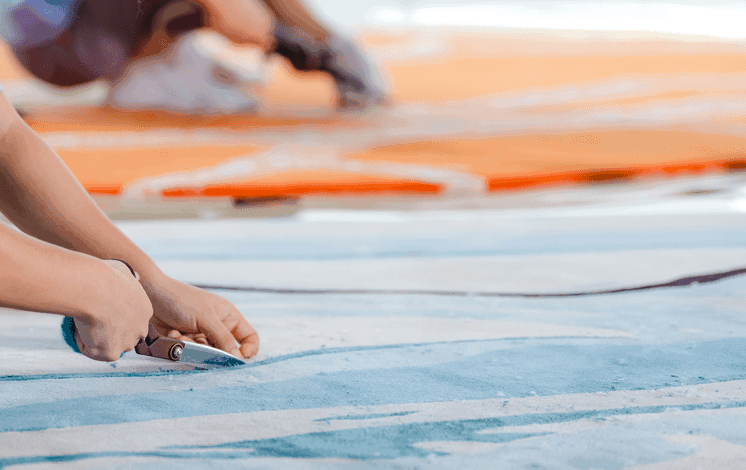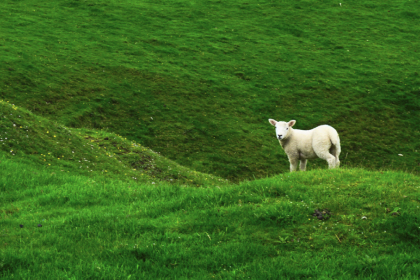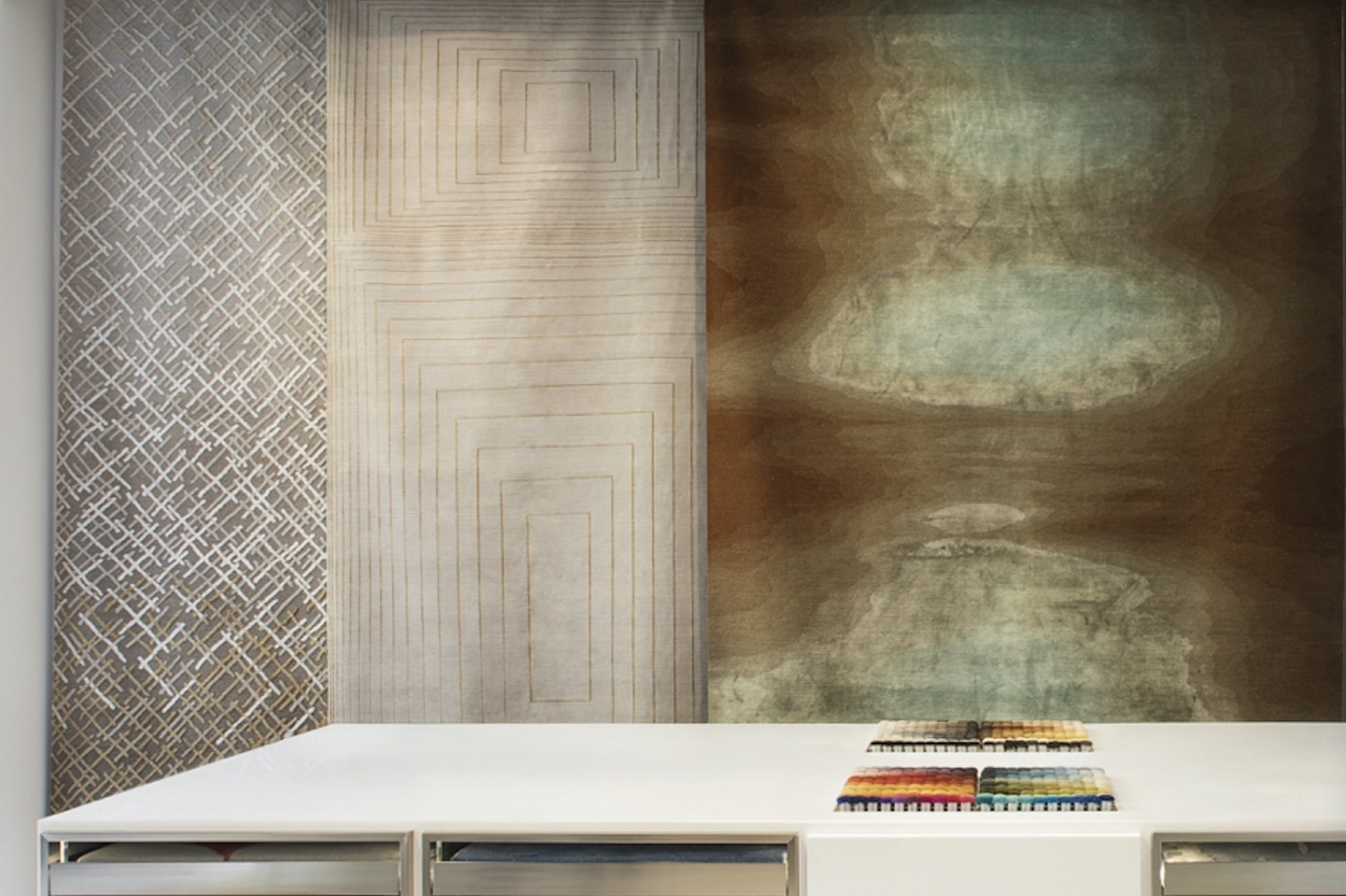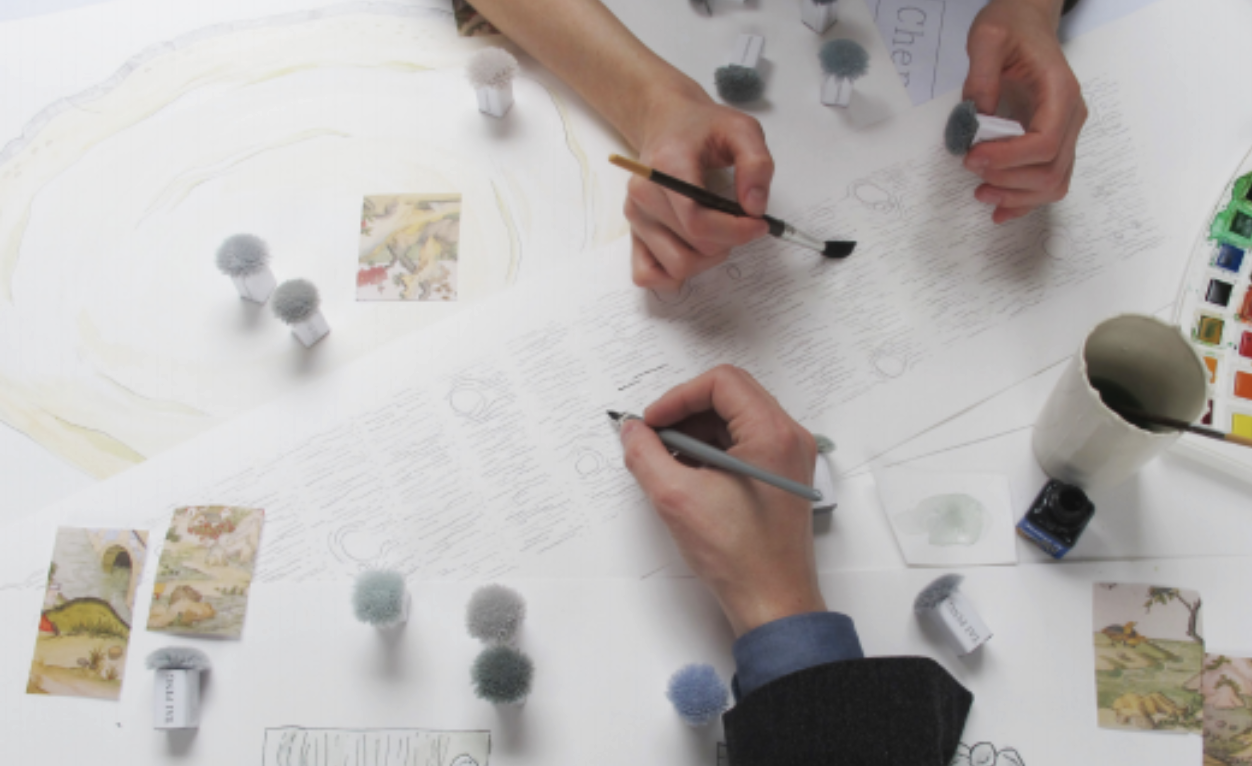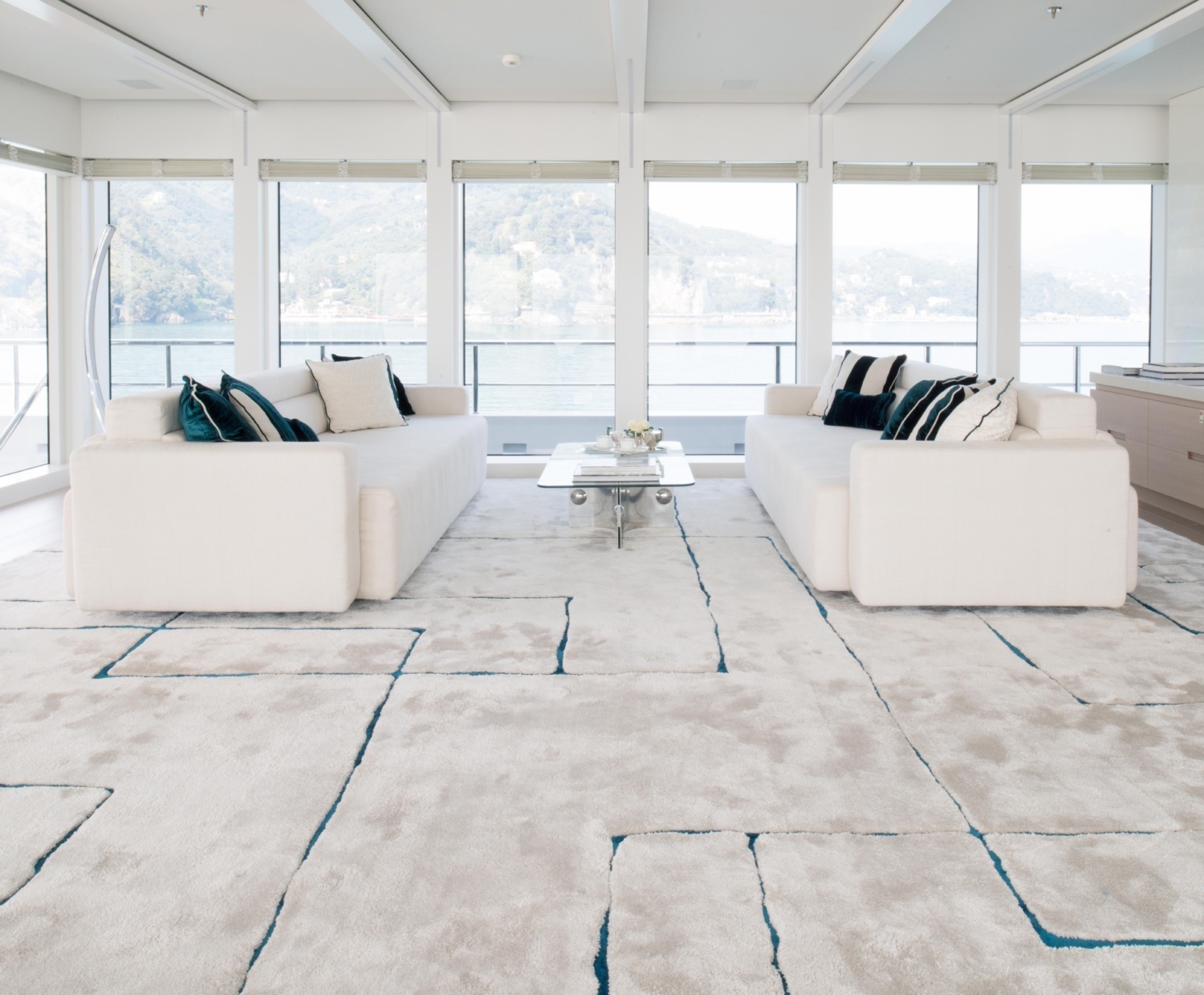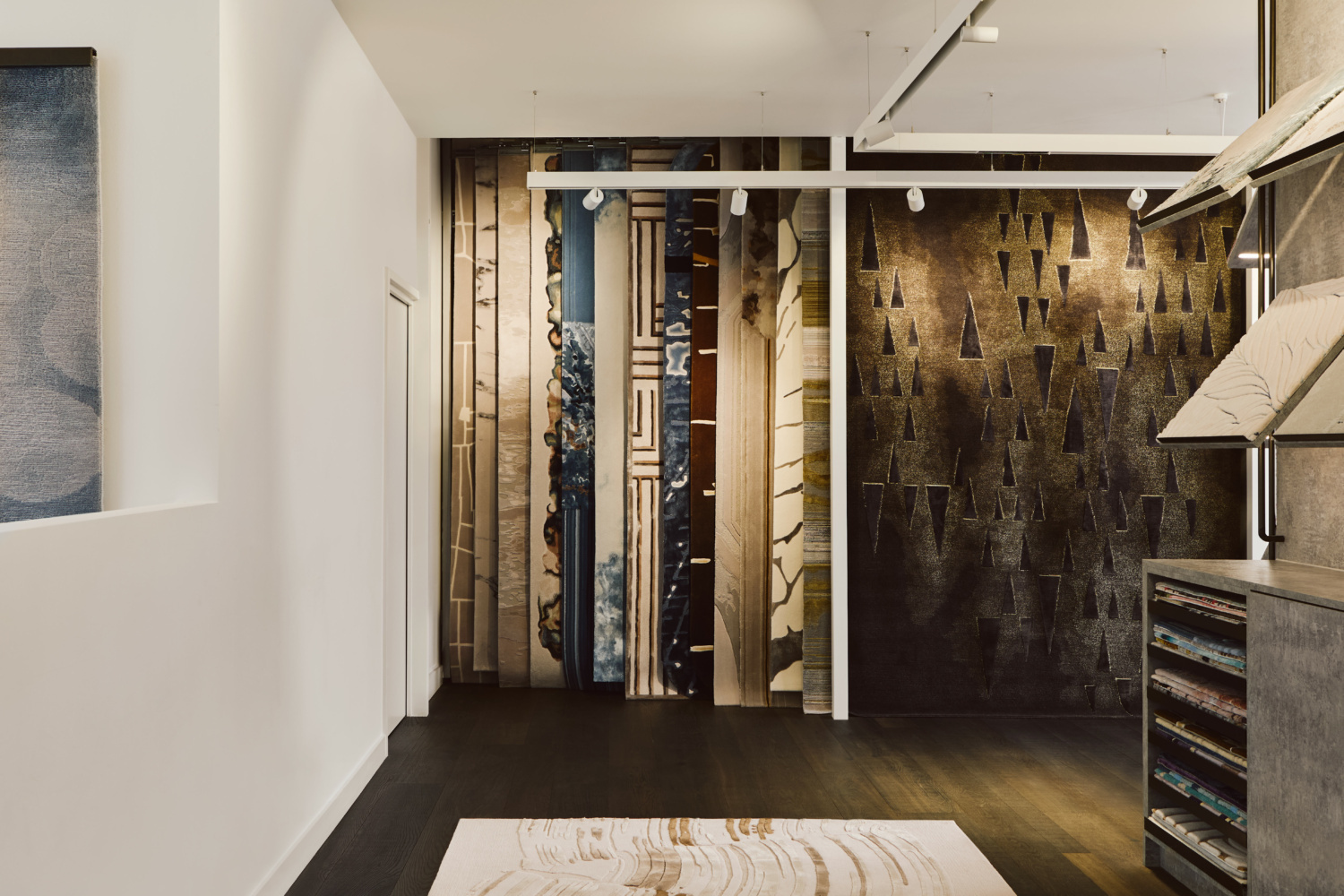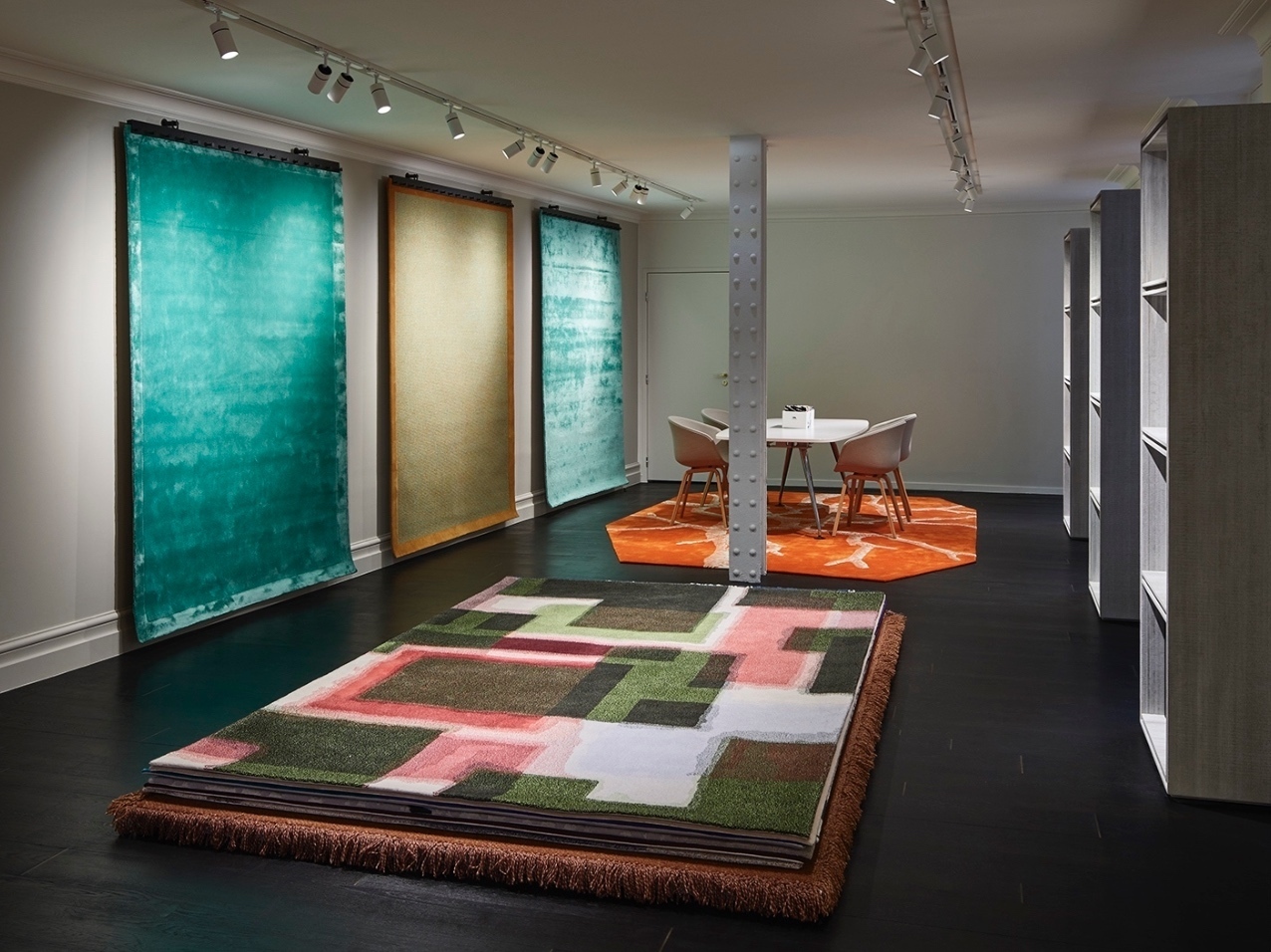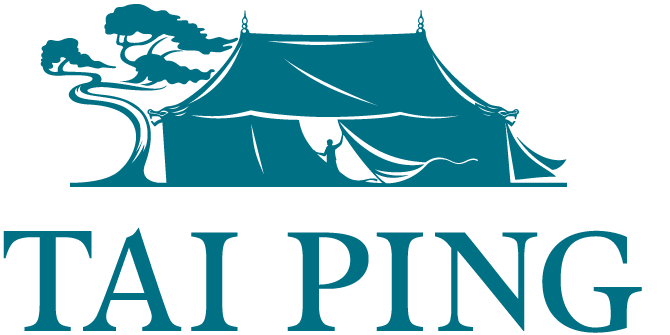Requires a Professional Account
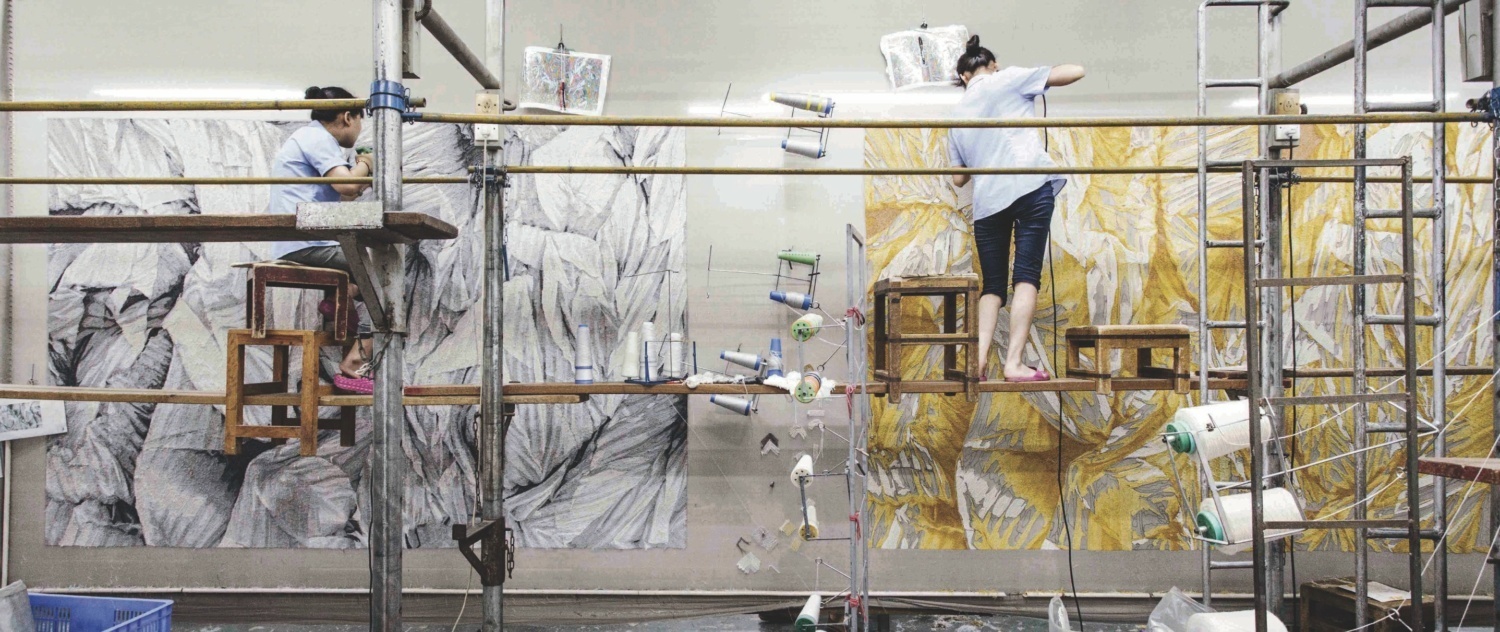
The Artistry of Tai Ping
The complexity of Tai Ping creations calls for exceptional artisanal skills. The standard of excellence that has defined the Tai Ping brand since 1956 is evidence not only in the company’s exquisitely handcrafted products but also in the spirit and commitment of its workers at all levels of design and execution.
On a daily basis, Tai Ping artisans transform the most complicated custom designs into works of art that exceed the expectations of discerning customers worldwide. Tai Ping’s ethos of community, longevity and employee care began in the company’s first workshop in 1956 and it proudly continues today.
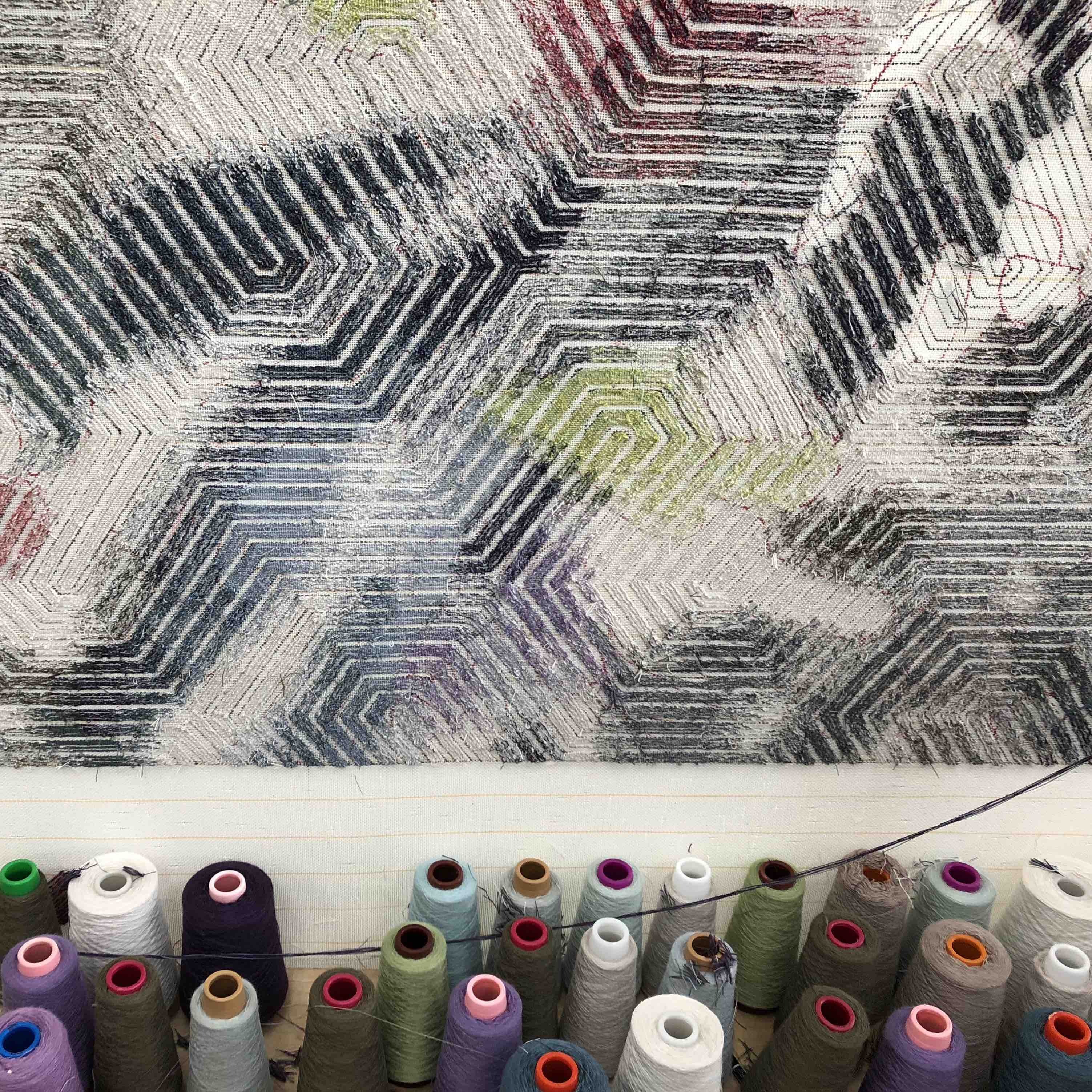
Design
A Tai Ping custom project typically starts with design development. The client may propose their own ideas, or may use a Tai Ping collection, or they may simply have a colour palette and genre in mind and leave the rest to the Tai Ping design team. Tai Ping offers 80+ different material choices, including wool, silk, cashmere, flax and cotton. The standard pom box contains 560 colour choices, although each year over 2,000 unique colours are produced.
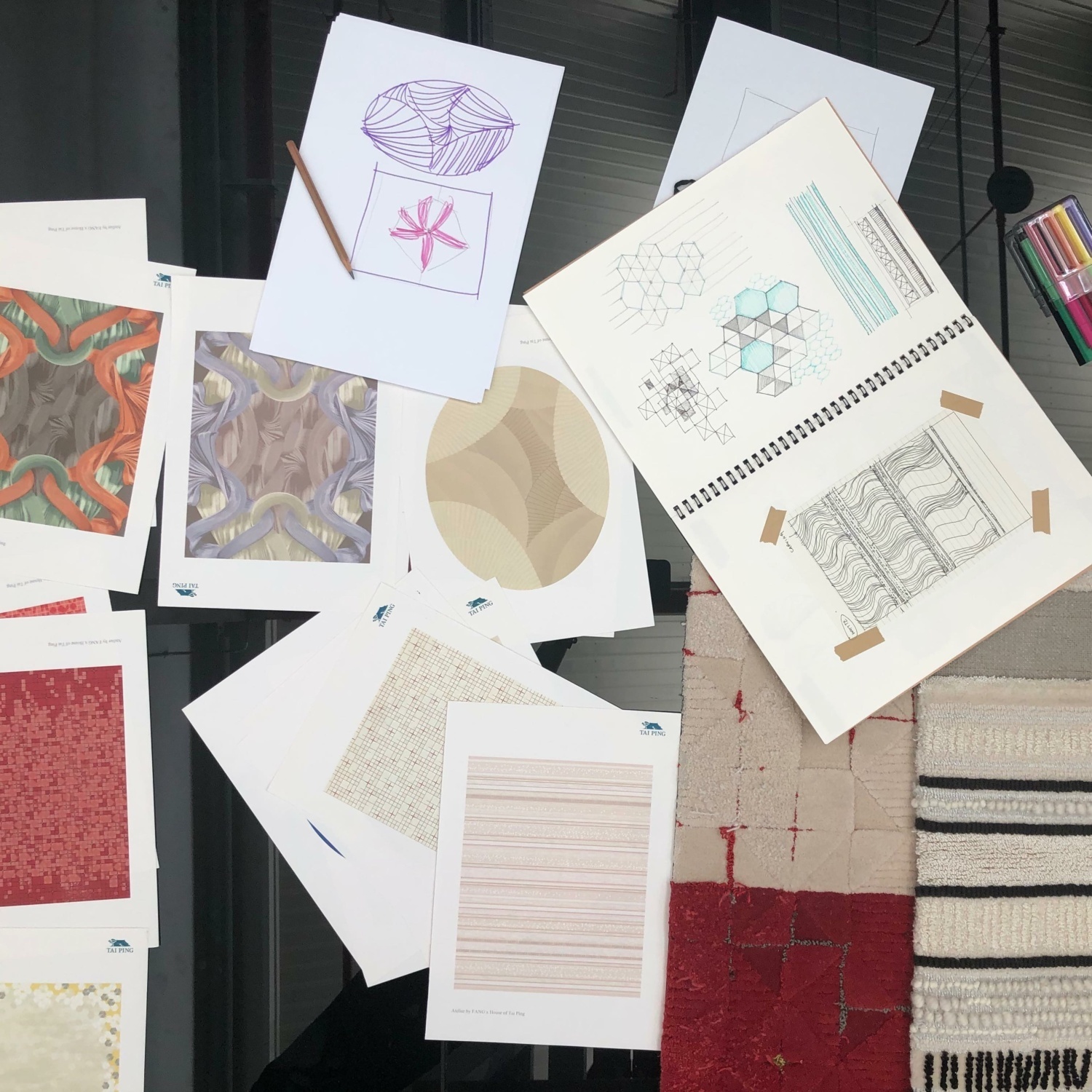
Sampling
During the design development process, custom handmade samples are generally prepared for the client’s review and approval, based on which, the order is placed. Tai Ping typically produces 3,000-4,000 samples per month.
Samples offer clients the opportunity to see and feel the precise aesthetic of the custom product they are creating. Texture, density, softness and colours are among the many traits that can be experienced through the sampling process.
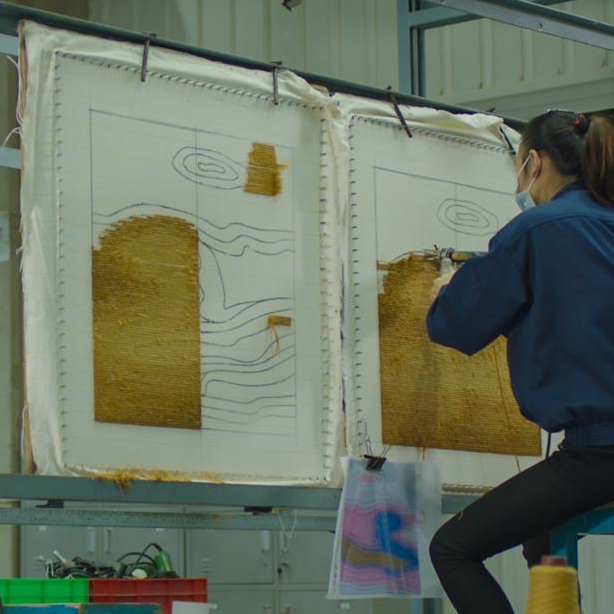
Template Production
The first step in the production of a Tai Ping carpet is to enlarge the design to actual size and create a full-size template. The design is mapped onto large acetate sheets by laser plotting, with the design outline traced as a line of tiny perforations.
Once the template is prepared, it is attached to a large vertically stretched canvas, and the pattern outline is transferred to the canvas by brushing ink onto the acetate, which seeps through the holes. Then an artist finishes the pattern on the canvas by hand.
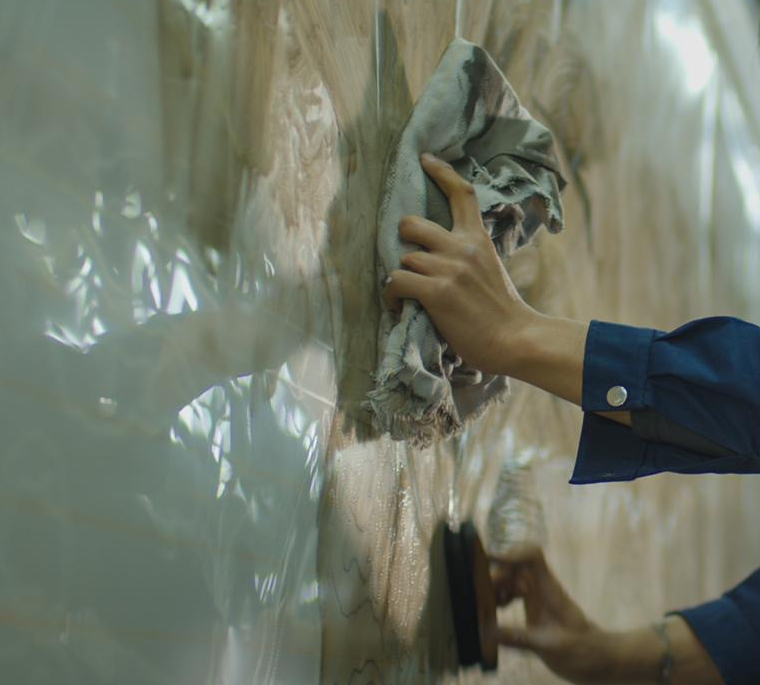
Dyeing
Dyeing is a critical process and among the most demanding challenges faced by TaiPing: discerning design-oriented clients require precision colour-matching … not made easier by the fact that people see colour differently! The recipe for any new colour is developed using a computer-controlled recipe formulations machine. This calculates the types, quantities and combination of dyestuffs to deliver the required colour. Then it prepares the recipe, which is scaled up to produce the production batch in the dye house. All completed yarn batches are also visually assessed by skilled colourists, using four different types of light – daylight, fluorescent, UV and infrared.
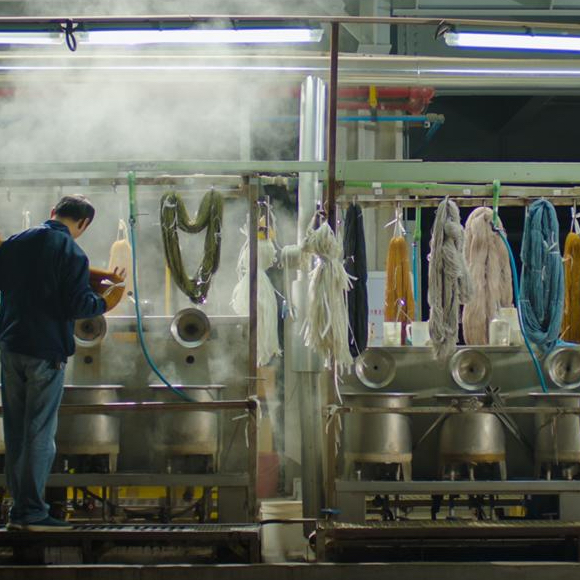
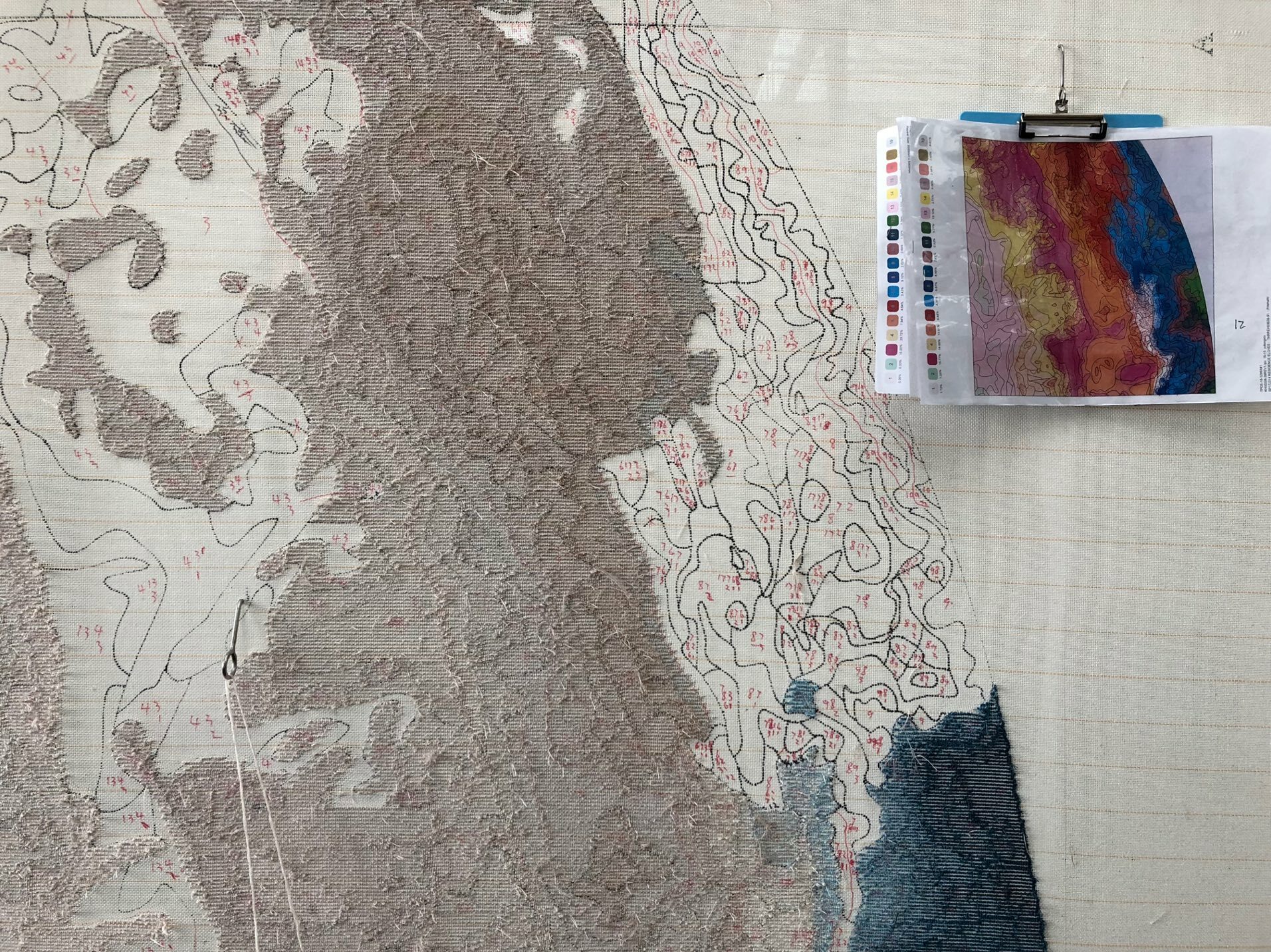
Tufting
Once the inked canvas and dyed yarn preparation stages are complete, the carpet is created by skilled artisans with many years of training in the hand-tufting process. The canvas is stretched vertically, and the artisans use special hand-tufting guns designed by Tai Ping to apply the yarns to the canvas, with each colour applied individually in turn.
While the design outlines on the canvas provide an overall guide, the artisan relies on experience and carefully-structured training to ensure the correct pile height, direction, cut or loop. In addition, many fine details depend on the artisan’s hand-to-eye coordination and artistic interpretation. The more complex designs require immense skill, with only a small proportion of the tufters qualified to perform this work.
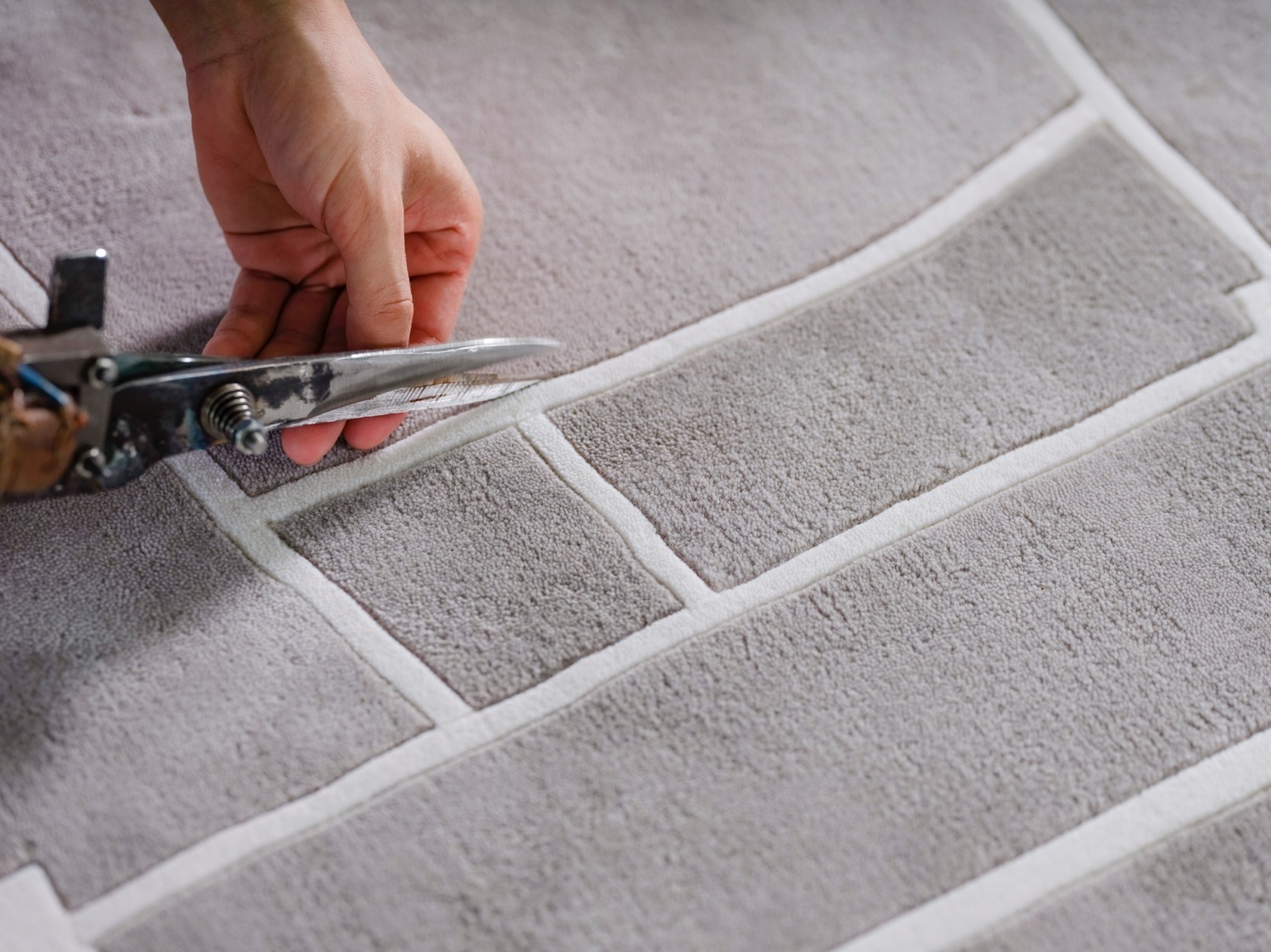
Finishing
Artisans on the finishing floor start by finely hand-shearing the carpet’s surface to give it smooth, consistent finish. Many orders feature a complex texture with varying pile heights along with special carving, sculpting or embossing effects.
The most skilled finishing artisans, with years of experience, perform these intricate operations with hand shears and scissors. A final inspection takes place to verify the dimensions, design execution, aesthetic and all technical parameters such as weight and pile height.
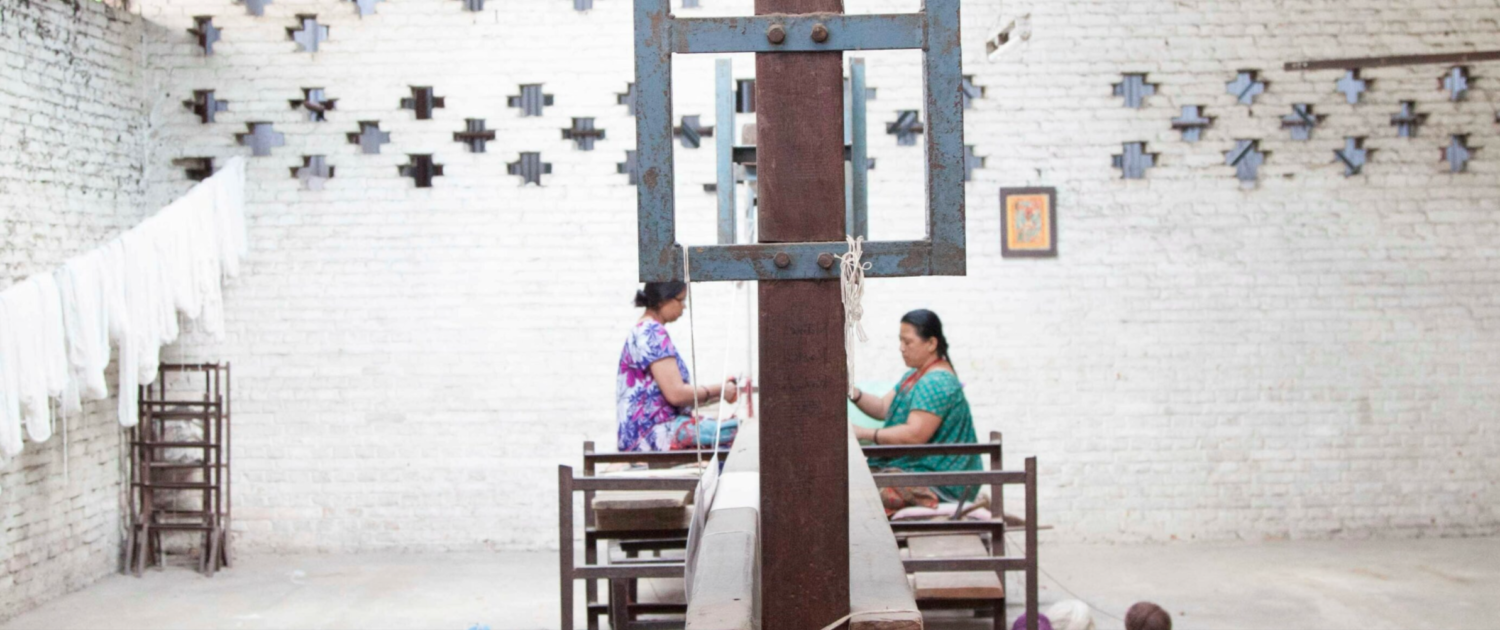
The Spirit of Nepal
Tai Ping also offers exceptionally designed hand knotted rugs, crafted by gifted Tibetan and Nepalese artisans. Tai Ping began working in Nepal in 2010 to develop and cultivate its own high quality resource where quality and core values could be instilled into the hand knotted production process.
Even as it journeys from the remote villages of Nepal, across the world to meet the demands of the most cosmopolitan designers, architects and textile connoisseurs, the Tai Ping hand-knotted rug, a one-of-a-kind creation that no machine can replicate, carries with it the spirit of its native land.

Design
It is spirit balanced between timelessness and modernity; between hauteur and humility. In each of its colours, forms, patterns and textures, the Tai Ping hand-knotted collections are designed for beauty, but crafted for transcendence. It is a singular piece of art that exists not merely to decorate, but to resonate.
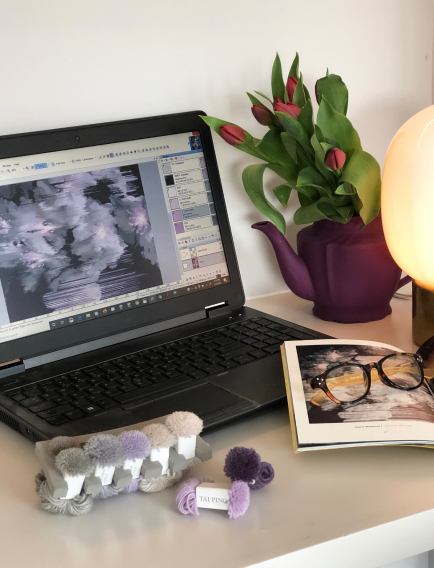
Craft and Material
Just as a wine is inextricably defined by its terroir, each Tai Ping hand-knotted rug is singularly imbued with the energy of the Himalayan valleys in which its origins are rooted. The composition of each fibre is borne of animals that graze upon the unique flora of that area to produce wool textures unlike any other in the world.
Each knot expresses the experience that lives in the fingers of its artisans, whose techniques have been refined and passed down of generations. Each Tai Ping hand-knotted rug echoes the song of the place and the hands that created it.
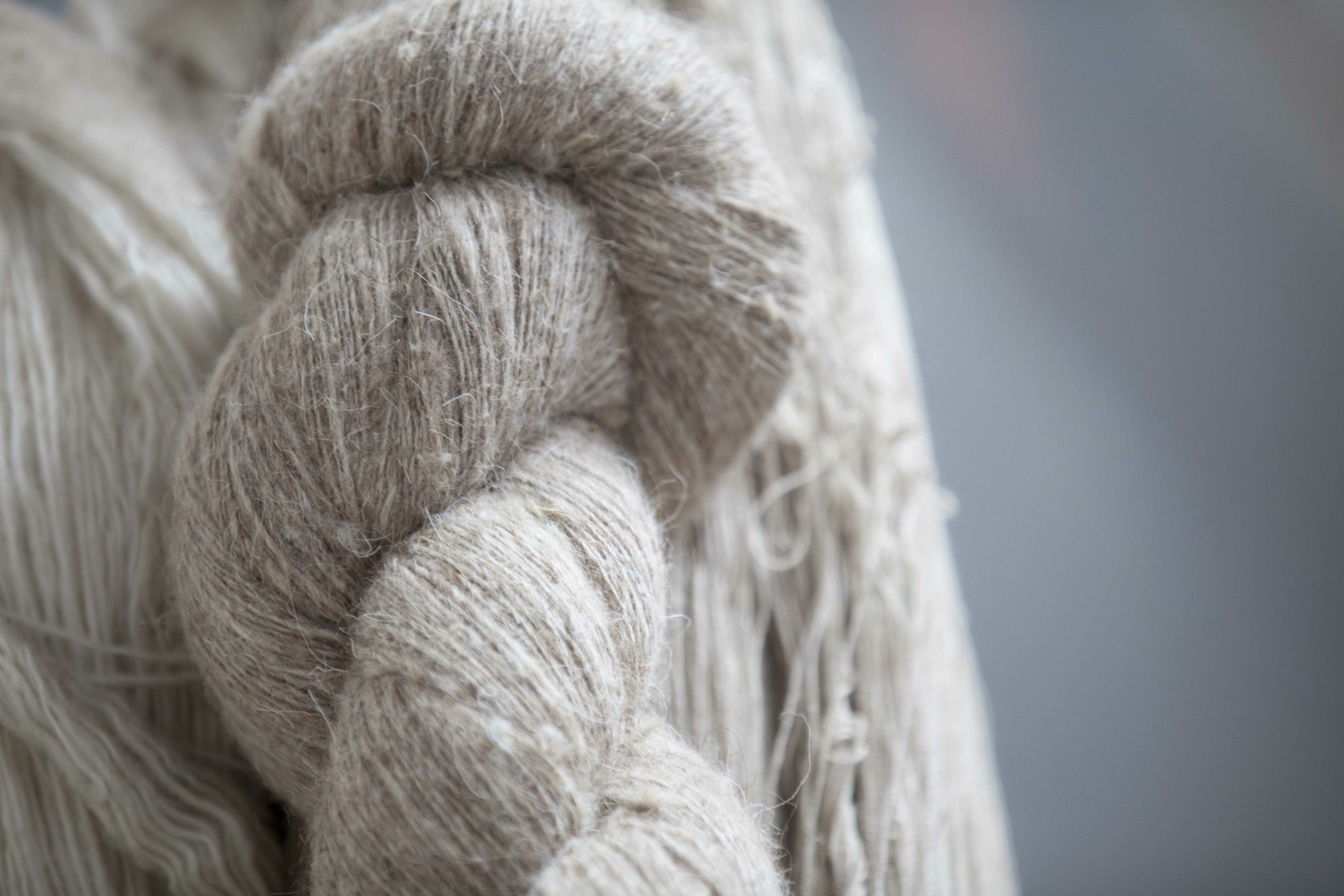
Yarn Preparation
Fibre Wash, Carding, Spinning and Skein Preparing
These meticulous four steps have been followed for centuries to prepare the wool needed for crafting the carpets. The precious fibre is obtained from Tibetan sheep that graze in the highlands of Tibet.
The wool is very rich in lanolin and by applying a lightly hand-wash the softness and impermeability characteristics of the lanolin are retained once dyed and woven
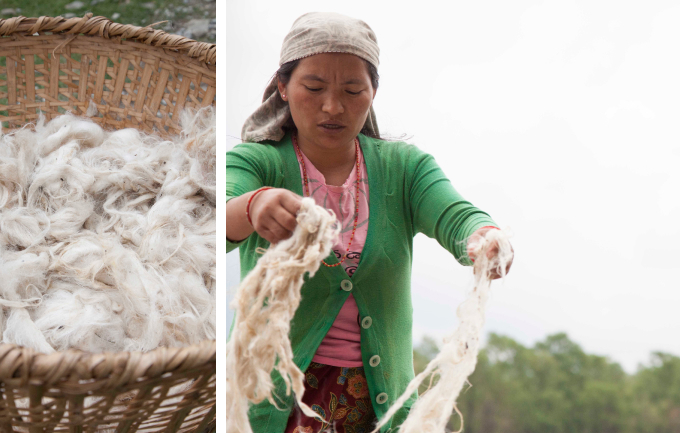
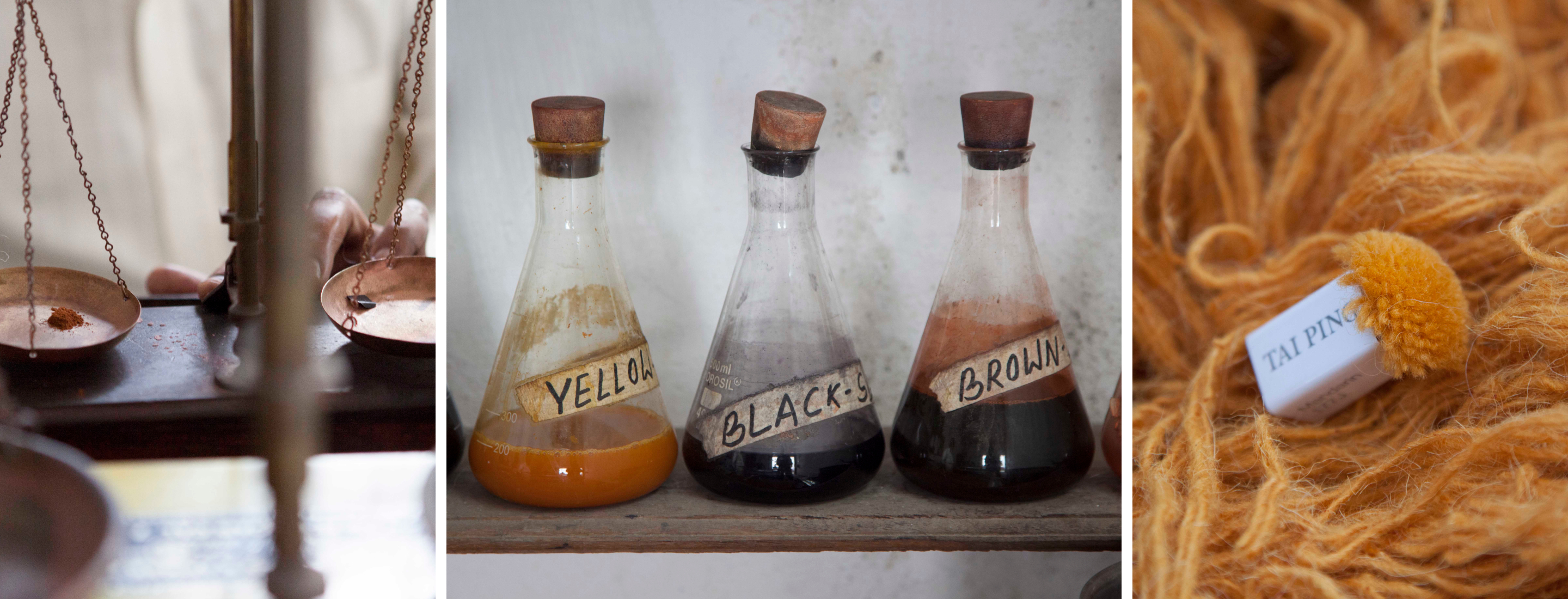
Dyeing
Colour is integral to the soul and sophistication of design, and a deep understanding of intricate techniques and respect of the culture of the artisans are hallmarks of
Tai Ping craft.
Using materials such as Chinese silk, Tibetan wool, hemp and other plant fibres, the traditional dyeing process in individual copper pots heated with wood fire, celebrate the inherent unevenness that gives each hand-knotted rug a timeless integrity.
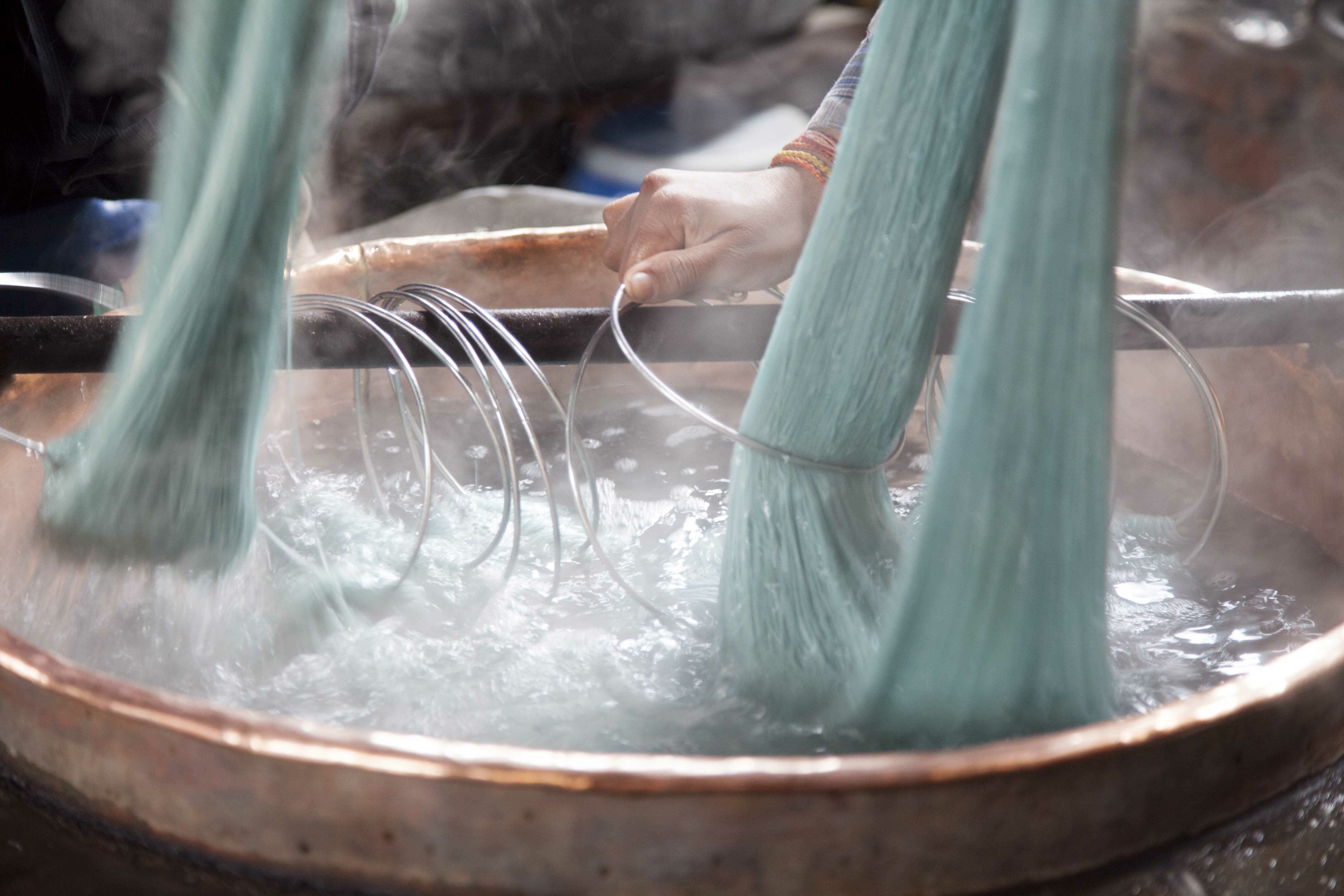
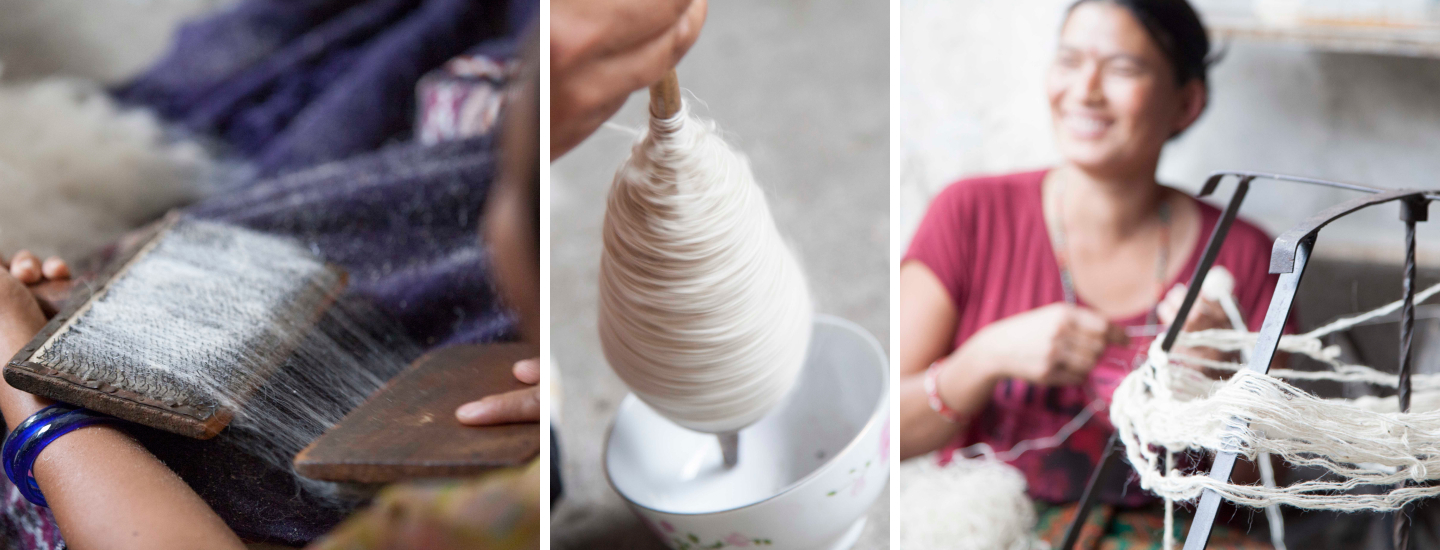
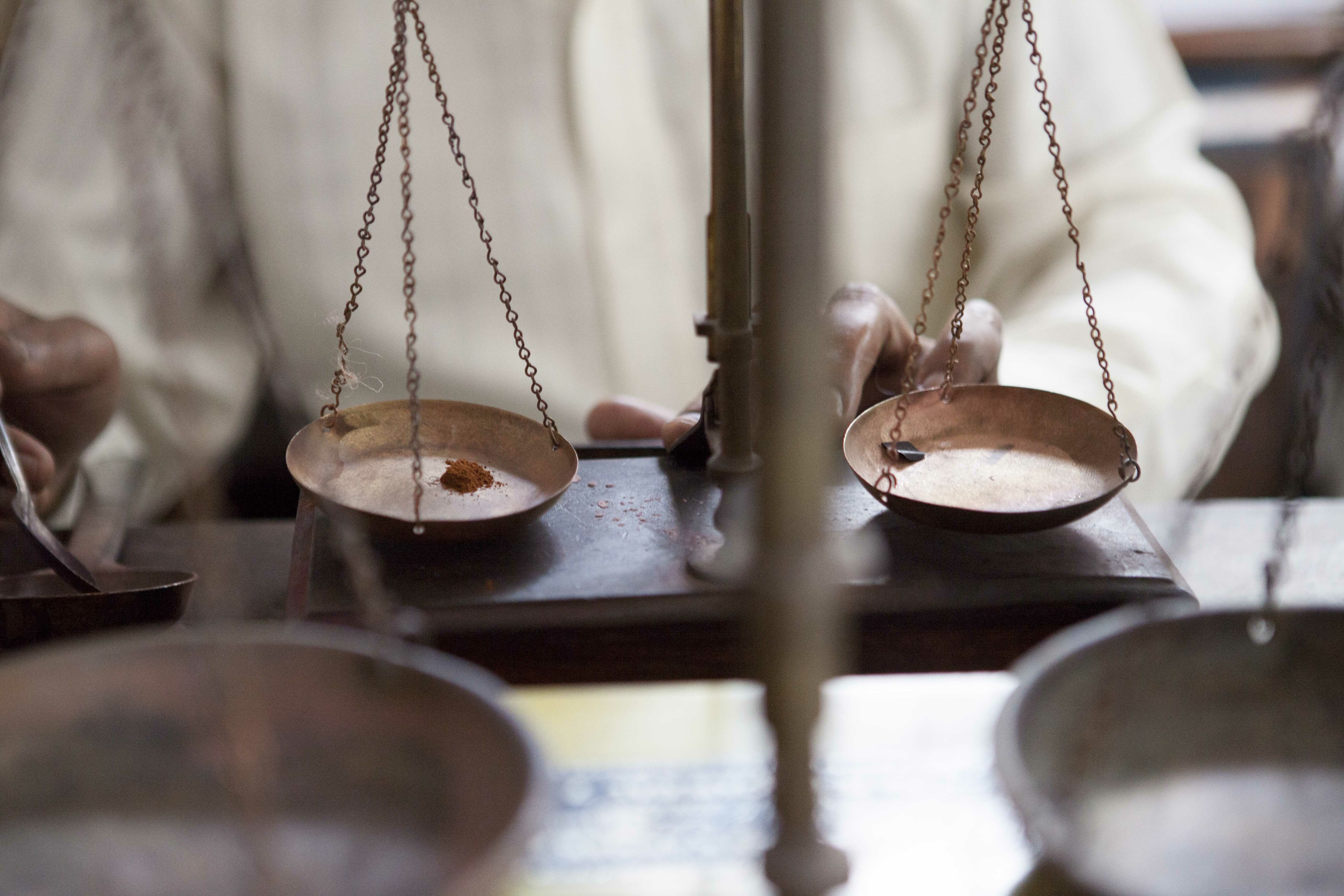
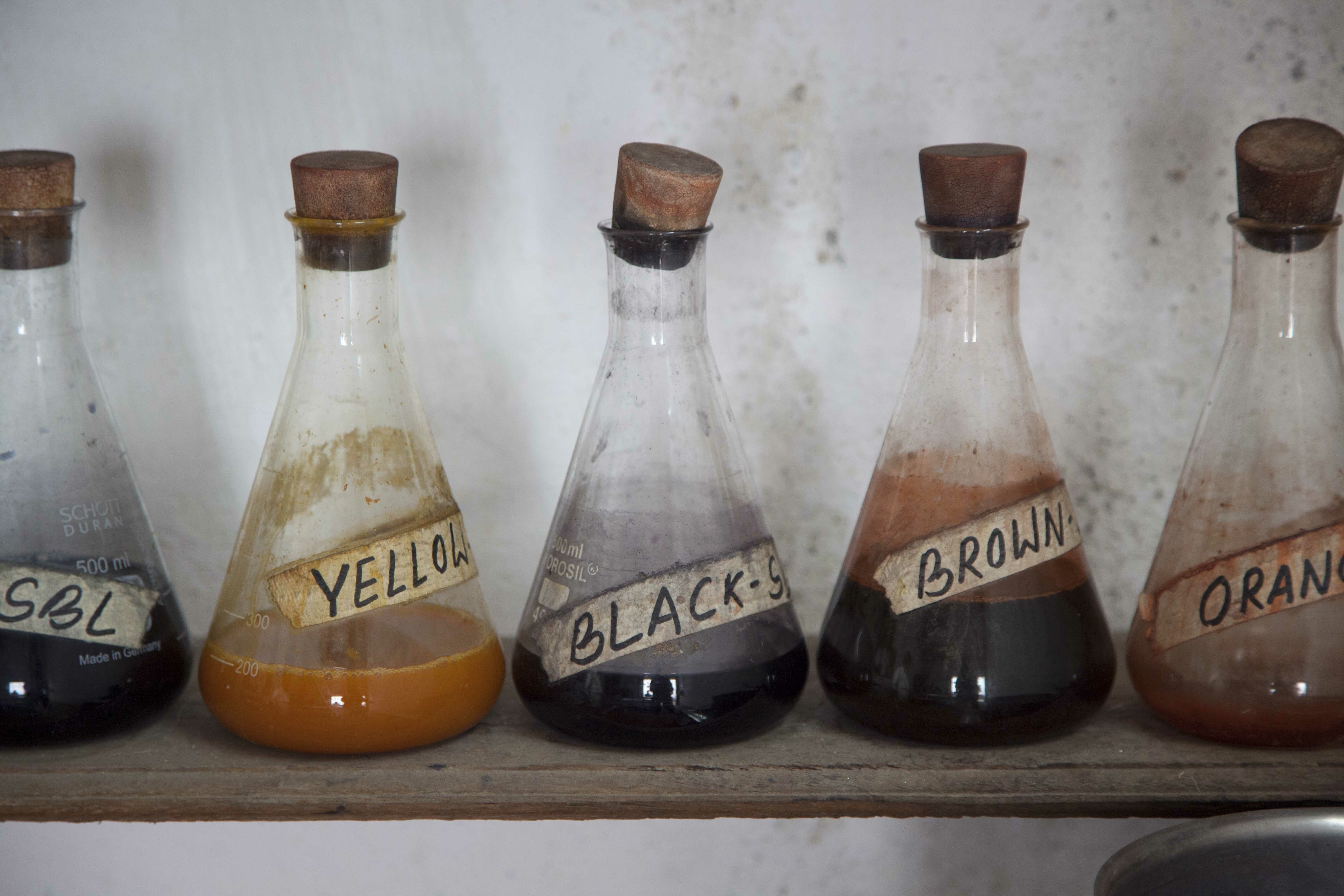
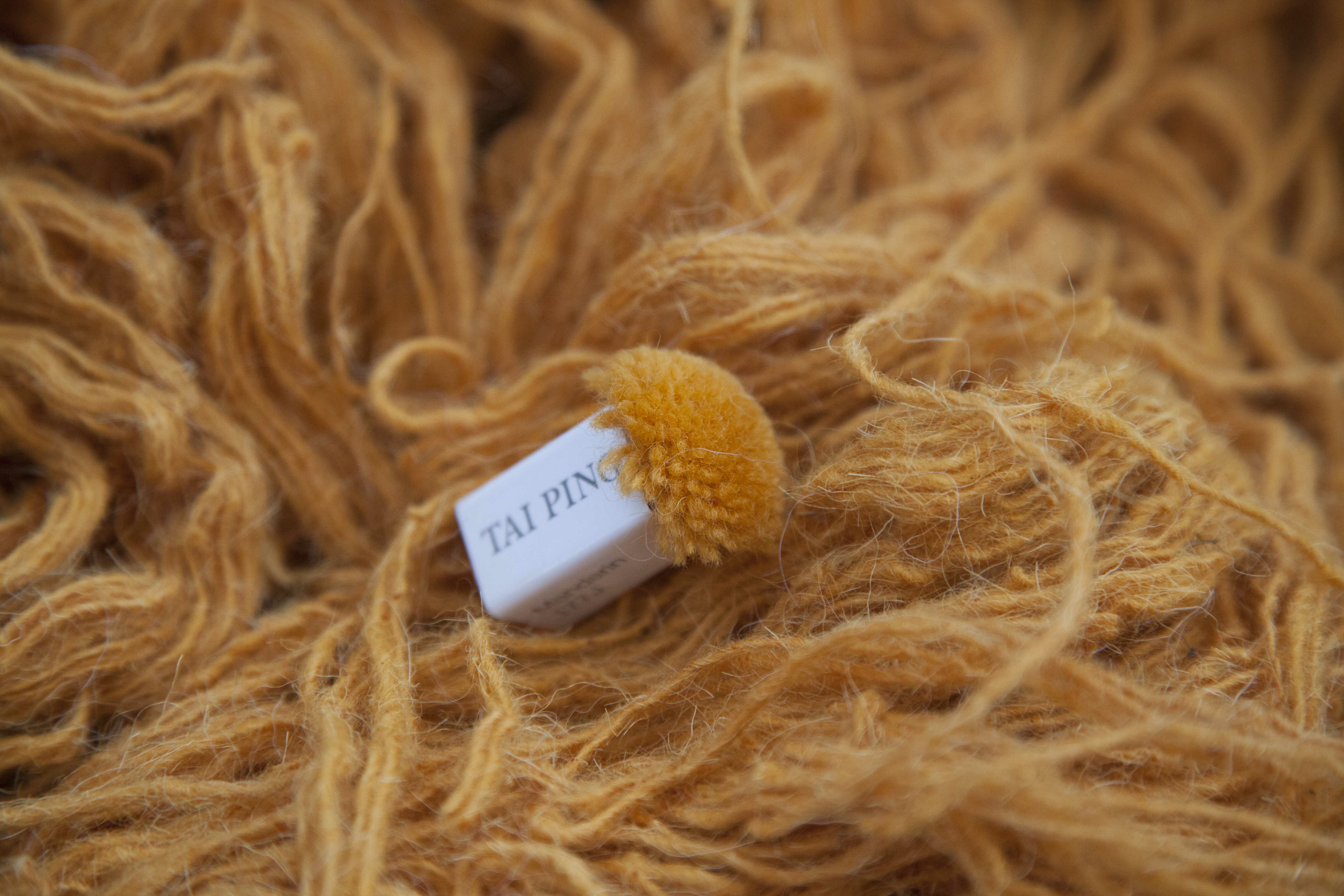
Cartoon
Each carpet design is entirely printed to scale and hand painted with contrasting ink colours to become the guiding map of the pattern.
Once finished, the cartoon is placed in front of the vertical looms for the weavers to follow each single knot planned
by designer.

Yarn Ball
After the dyeing and air-dry process take place, every yarn combination is set in balls to use as the weft construction of the hand-knotted weave.
Each knot can content up to three different yarns, and it is common to combine different colours or fibres to bring settle textures in the design.
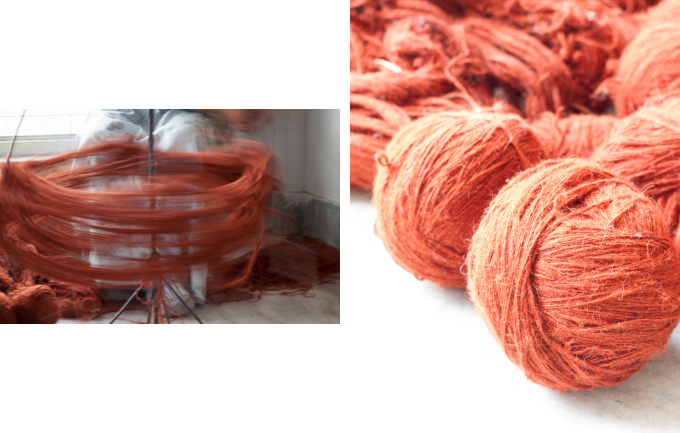
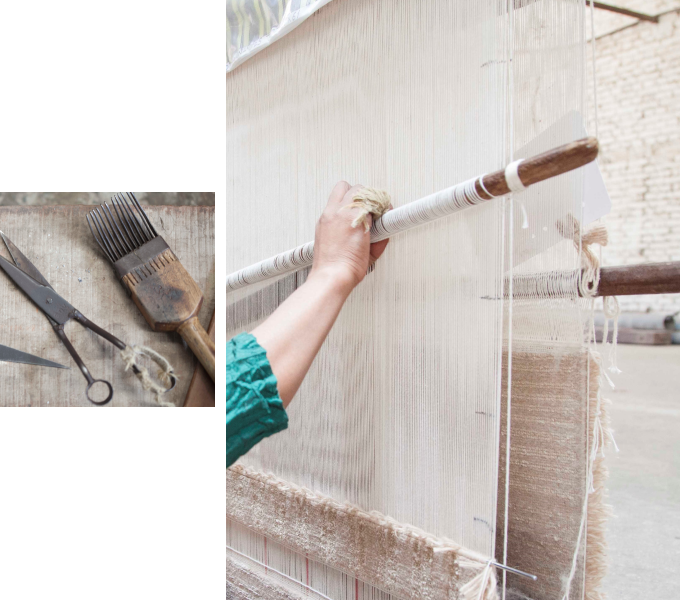
Weaving
Woven and hand-knotted techniques aare craafted by skilled local artisans in a welcoming, well-organised and reliable environment, these rugs honour the centuries-old traditions that Tibetan refugees first brought across the Himalaya to Nepal over 50 years ago.
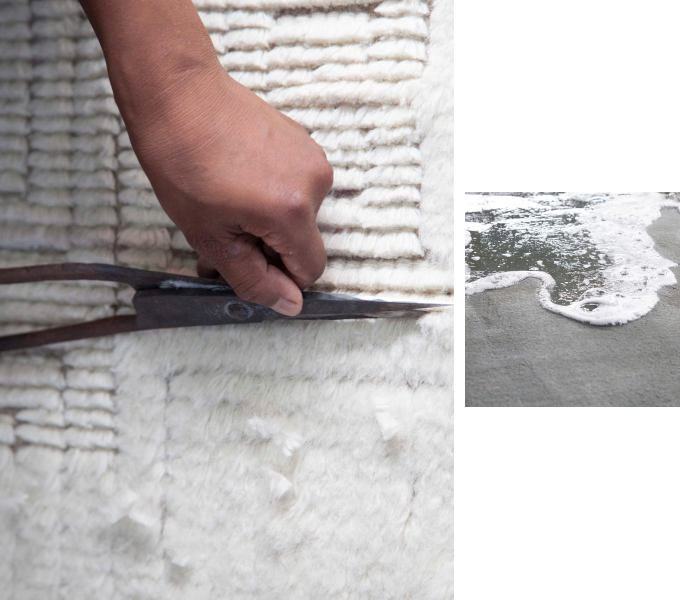
Finishing
Echoing an ancient Eastern philosophy centred not merely on the sustained application of the mind on an object, but also the subtle discernment achieved only through such concentrated attention, Tai Ping hand-knotted rugs marry conscientious attention to detail with authentic,
handcrafted artistry.
Tai Ping is a certified Label STEP Fair Trade Partner
We are committed to the wellbeing of weavers and workers in the handmade carpet industry. Each Tai Ping rug helps improve the lives of the people who created it.
Label STEP is more than just a label. To address the complex issues of the handmade carpet industry at their roots, Label STEP takes a solutions-based approach. Founded in Switzerland in 1995, the non-profit organization’s comprehensive fair trade standards encompass universal human rights, including the prohibition of child labour; working conditions; fair wages and eco-friendly production.
As a Certified STEP Fair Trade Partner, Tai Ping commits to independent audits throughout the supply chain. STEP actively supports producer improvements while empowering weavers and workers through educational programs that cover such topics as health and safety and financial literacy.
Through these combined efforts, Tai Ping and Label STEP reinforce industry sustainability and help preserve centuries-old artisanal skills.
To learn more about Label Step organization.
